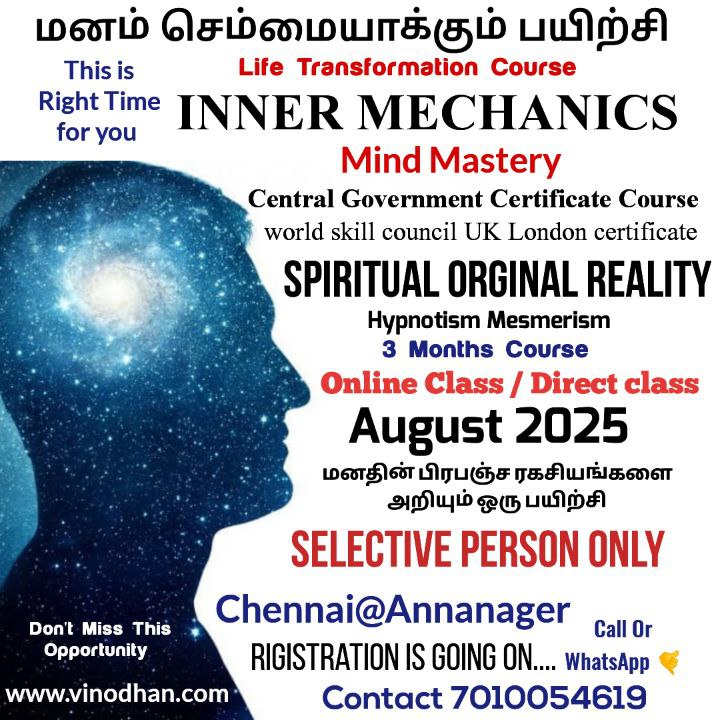Post Views: 2,125 SELECTED PEOPLE ATTEND THE CLASS THIS IS PATH OF GURU SARAKALAI Sarakali is the foremost of the higher arts in the Siddhar arts. This is the noble art that was first taught by Emperor lord shiva to the almighty Mother of umayal Ancient Sarakali Breathing is the very essence of life and the first thing we do when we enter this world and the last thing when we depart. In between, our bodies absorb roughly some Yogi breaths. Apart from sustaining life, the mind, body and breath are so intimately connected that they deeply influence each other. The way we breathe is influenced by our state of mind, and in turn our thoughts and physiology can be influenced by our breathing. Deep breathing practices advocated in can have a positive impact on our physiology, both body and mind .For thousands of years, Yoga have employed to maintain, balance and restore physical, mental, emotional, and spiritual health. It results in several physiological benefits, achieved through the control of respiration. Practice long, slow and deep breaths in and out through the nose as you walk at a moderate pace. Try to extend your inhalations and exhalations as you walk. Keep the count of steps during each full inhale and exhale. Aim to take ten steps or more for each inhale and exhale. This method works to combine the calming effect of breathing with an active lifestyle. The process of thinking and emotions are both voluntary and involuntary as is the act of respiration. Pranayama (control of the vital life force) can be achieved through the control of the respiration process. Advanced yogic breathing practices bring benefits to the various systems of the body, by improving circulation and thus enhancing the performance of the various organs. The benefits of a regulated practice of simple, deep yogic Bursting a Sara-Vedi (சரவெடி) is an enjoyable and spectacle event and last week it happened to me when I involved in entertaining my son by firing the left over crackers of this Deepavali season. Whenever I came across any substances named with the term Saram (சரம்) as prefix or suffix, my mind wind up with the thoughts on ancient Tamil’s breath science Saram. An orderly arrangement of a same substance is common to the above all terminologies and through this interpretation, we can convincingly explain the term associated with science of breath Saram as (subtle) flow of the breath energy (Pranan – பிராணன்) in a sequence / uniform manner / continuous order in human body. As per the ancient Indian medical science, the breath energy is flowing through two major subtle channels viz. Idakalai (இடகலை) and Pinkalai (பிங்கலை) in human body. Idakalai: Breath energy flow channel ranges from right big toe to left nostril Pinkalai: Breath energy flow channel ranges from left big toe to right nostril The ancient Indian science community known as Siddhars explains these two intersecting breath energy flow channels by comparing it with the crossover nature of the scissors (கத்தரிக்கோல் மாறலாக). The description of the one sided flow of breath exclusively through the right or left nostril is an interesting fact in the science of Saram. When the breath flows through the right nostril only, Pinkalai is in active phase and when it flows through the left nostril only, Idakalai is in active phase. At a time only one channel either Pinkalai or Idakalai should be active and the other should be inert and every 2 hours there is a cyclic shifting of the breath from one nostril to other. It is possible to identify the active channel of breath by observing the touch sense offered by the airflow on the active nostril. (At present for me, while creating this post, the breath flows through the left nostril) The flow of breath through both nostrils happens for few seconds only during the juncture of shifting the breath from one side to other side. As per Siddha literatures, right nostril breath is good for intellectual activities like studying etc. and left nostril breath is good for creative activities like drawing etc. Siddhars suggest suitable active nostril breath to obtain favorable results on each and every activities of our day to day life like studying, sleeping, eating, defaecation, debate / argument, fight, approaching a person with obligations etc. Ancient Sarakali Class Course Details When did Sarkalai begin? About the Sarakalai What are the Sarakalai ? Types of Ancient breath Sarakalai How to Choose the Sarkalai Technique How the Saraklai work? How to Performance the Sarakalai What is Sarakalai ? How these Sarakalai help Heal other ? How to use Sarakalai ? Benefits of Sarakalai Clean of Sarakalai Technique Toxic Cleansing Sarakalai – Best Techniques Saraklai Vasi Power Frequently Ask Question Sarakalai Medium in Tamil / English Duration :4 hours 2 day workshop Online Class / Direct Class Duration: Timing: 4.00 am to 7.00 pm Course Fees:- INR Rs.90,ooo One to One Class Contact 7010054619 Few simple techniques for shifting to the desired nostril breath are discussed here. They are as follows, Right nostril breath for good sleep: Siddha medical science suggests right nostril breath for good sleep. While going to sleep, if the breath was in the left nostril, it is possible to shift the flow to right by lying on the left side of the body and keeping the flexed left arm as a support to the head. The pressure executed by weight of the body in (the middle of) the left upper arm enhances the flow of right nostril breath. Sometimes simply lying on the left side of the body is also enough to shift the breath to right and maintain it. The same technique is applicable for shifting to left nostril breath by lying on the right side of the body. In a person with normal healthy physique usually it will take 5-10 minutes for shifting the breath from one nostril to another. It may vary person to person; the body condition of the individual person in different seasons also plays a role. Left nostril breath for getting favour on our obligations: Left nostril breath positively favours acceptance of our obligations expressed with others and I have







